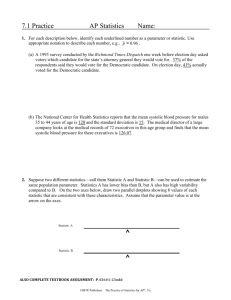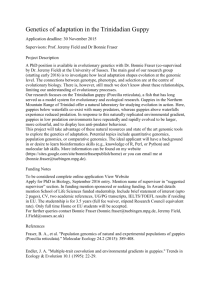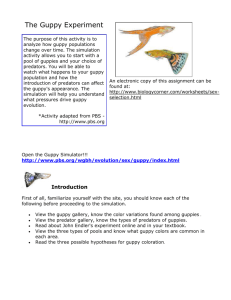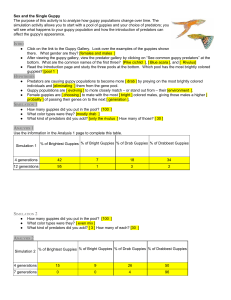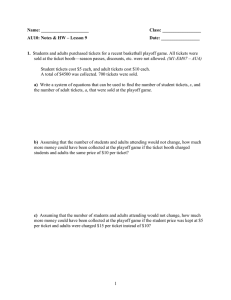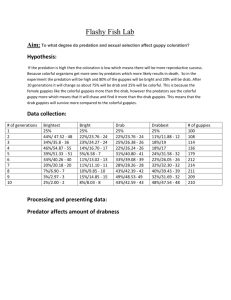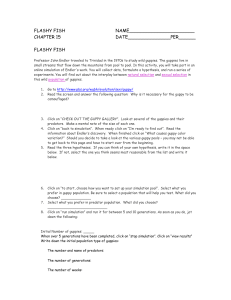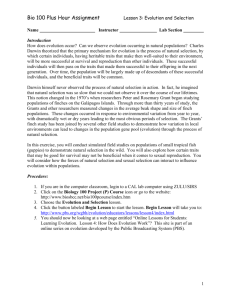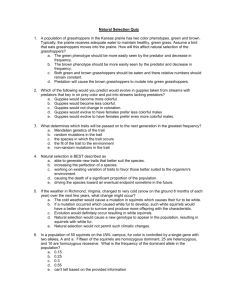Guppy Lab Abstract Guppies are fish who widely vary in color
advertisement
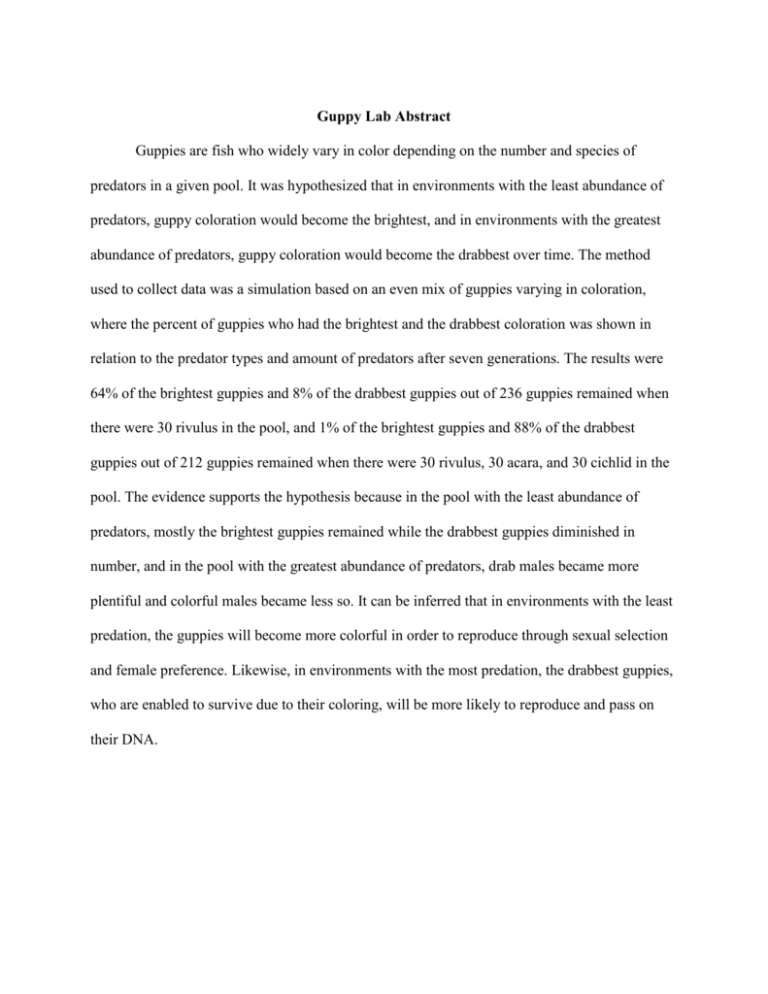
Guppy Lab Abstract Guppies are fish who widely vary in color depending on the number and species of predators in a given pool. It was hypothesized that in environments with the least abundance of predators, guppy coloration would become the brightest, and in environments with the greatest abundance of predators, guppy coloration would become the drabbest over time. The method used to collect data was a simulation based on an even mix of guppies varying in coloration, where the percent of guppies who had the brightest and the drabbest coloration was shown in relation to the predator types and amount of predators after seven generations. The results were 64% of the brightest guppies and 8% of the drabbest guppies out of 236 guppies remained when there were 30 rivulus in the pool, and 1% of the brightest guppies and 88% of the drabbest guppies out of 212 guppies remained when there were 30 rivulus, 30 acara, and 30 cichlid in the pool. The evidence supports the hypothesis because in the pool with the least abundance of predators, mostly the brightest guppies remained while the drabbest guppies diminished in number, and in the pool with the greatest abundance of predators, drab males became more plentiful and colorful males became less so. It can be inferred that in environments with the least predation, the guppies will become more colorful in order to reproduce through sexual selection and female preference. Likewise, in environments with the most predation, the drabbest guppies, who are enabled to survive due to their coloring, will be more likely to reproduce and pass on their DNA.

